
In this article, I explained how Gamification enhances user experience in B2B products. Learn how to implement Gamification & Motivation Theory in Digital B2B Products for better user engagement and retention.
Gamification gives designers the ability to evoke human emotions, which increases the likelihood that a product will succeed since it elicits a response from the user. It becomes noteworthy and distinctive.
People can be manipulated. Advertisers, marketers, and psychologists have always known this. Game developers too. Because the tendency to play is deeply connected to us. That's why people allow themselves to be manipulated by harmless games and thereby reveal data about themselves both willingly and unconsciously. No wonder, then, that gamification has been used more and more in websites, apps, and trade fairs in recent years to entice target groups and individuals to disclose data.
What is gamification, and why do we need it?
The process of adding game mechanics to non-game products is known as gamification. As the brand works to make the product UX enjoyable and interesting, like a game, it demonstrates caring for the users. Gamification is prevalent in financial apps, online banking platforms, health apps, language learning apps, etc. It is now a crucial part of many excellent mobile apps and software services. Typically, it involves graphics and animations that enhance UX.
Types of game techniques in UX design
Different game techniques are used by UX designers to spice up mobile and web experiences. It enables boosting user interaction, cultivating brand loyalty for the app's creator, and keeping users. The top five game mechanic categories are as follows.
Badges and Stickers
Users are familiar with badges and stickers because we've seen them in video games in the past. You can incorporate them into the functionality of your mobile app and offer rewards to users who reach a particular threshold of points. It seems like a minor point. It appears to be so tiny and inconsequential. You must confess, though, that when the work is finished and you receive the notification, you typically experience a special sense of satisfaction. Now, assume that this notification includes a reward (like a badge or sticker, for instance). It can make the person feel even happier.
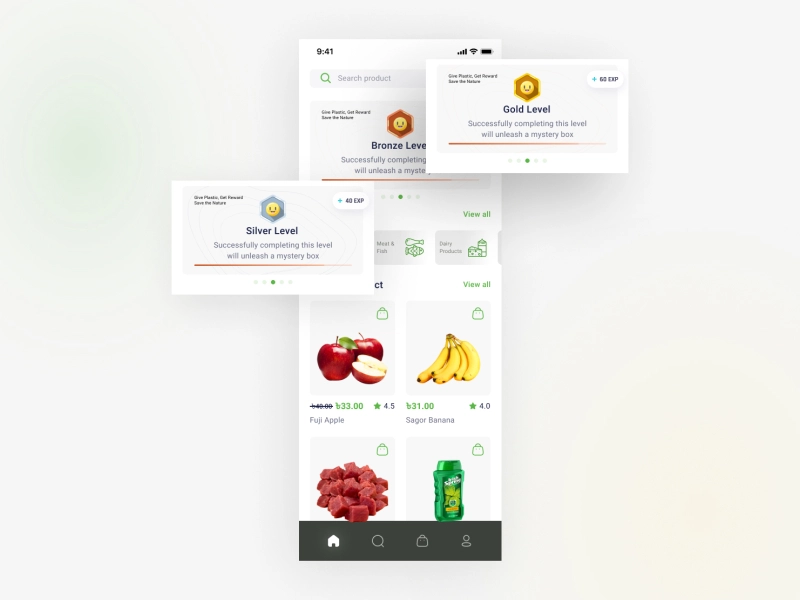
Leaderboard
Nothing sweetens a challenge like the tempting prospect of taking the reins. Another important element that makes a mobile app's UX an even more thrilling and daring activity is competition.
You know, my friend has been studying a foreign language with a top educational program. Until the learning course leader was determined at the end of the day based on the number of points acquired when tasks were completed, it appeared that none of the participants could get any sleep. These individuals were daily engaged in the ferocious competition. LOL, it's a funny case. But it's a fantastic illustration of how the leaderboard may spur us on to improvement.
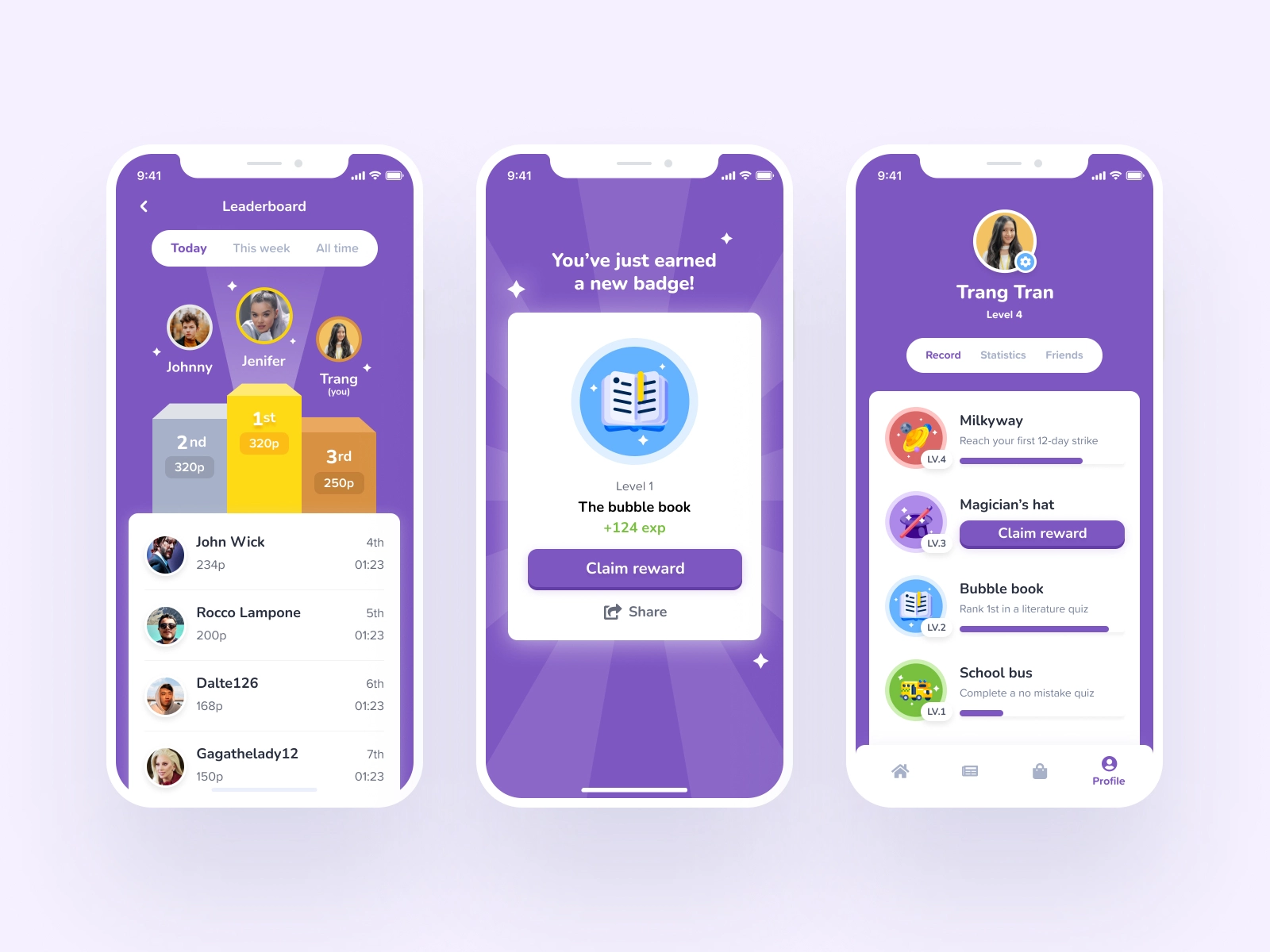
Challenge
The human being is fundamentally an evolving entity that takes on new problems and learns how to overcome them. We enjoy difficulties. Ideally, we ought should. The majority of us view them as chances to push our limits and test ourselves. On the one hand, they force us to leave our comfort zone and inspire us to achieve greater heights. On the other hand, they hold our attention and make mundane tasks exciting. This gamification strategy, used in mobile and web UX, encourages users to do new things and discover more about the product.
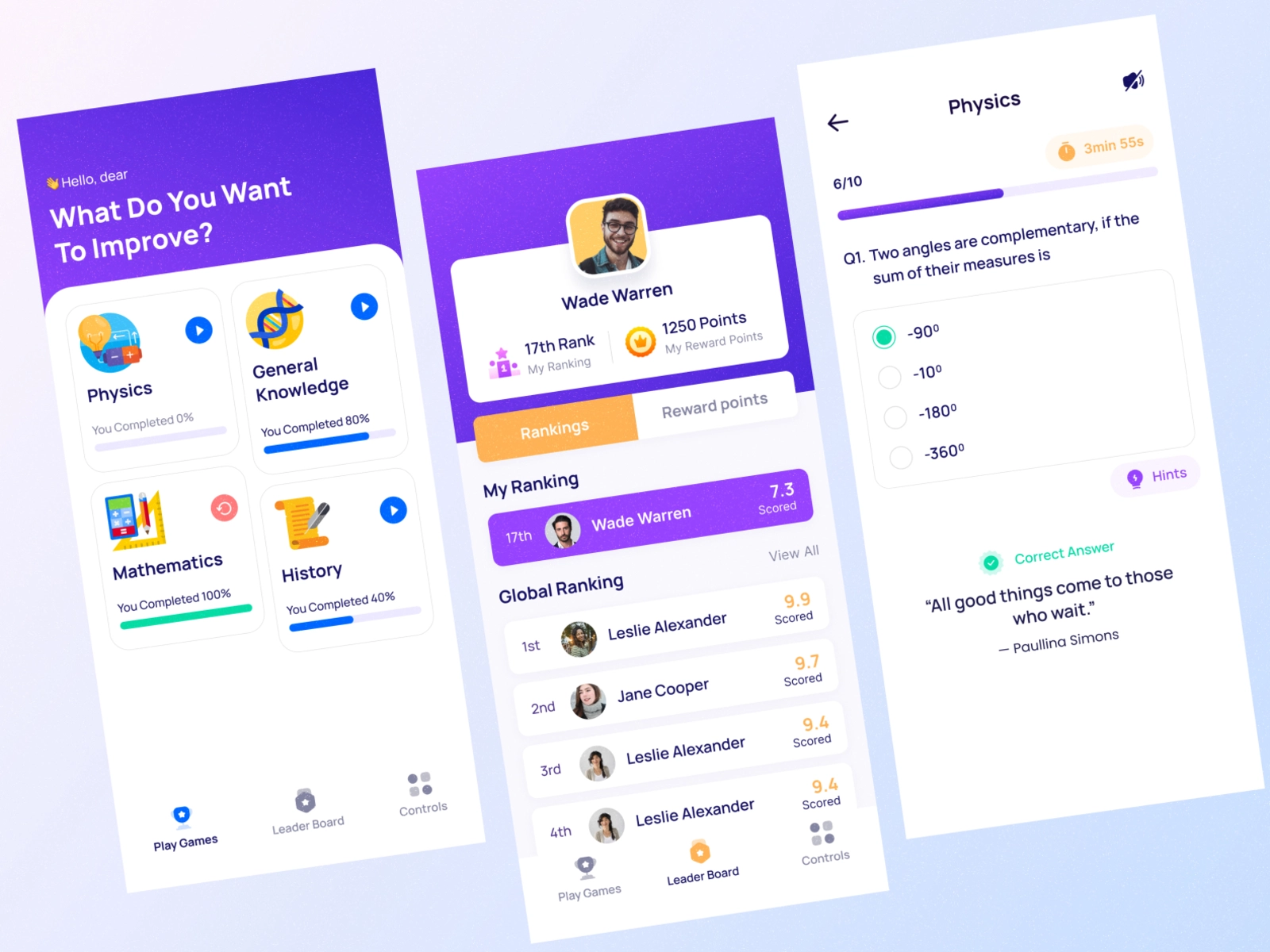
Points
The point system is a common method used by games to show the player's development. It allows users to see how far they've come and how far they still have to go. It acts as a motivator for them to keep going and finish the chores. Points may be included in gamified digital items to gauge user progress as well. The majority of educational apps, productivity apps, time management apps, task managers, and language learning apps adopt this method.

Journey
By using this game mechanic, users are onboarded gradually, making their relationship with a product becomes a personal journey. The "scaffolding" strategy is typically advised to offer additional functionality as the user gradually gains more experience. People can experience the thrilling adventure of the app as genuine gamers learning about new product features thanks to this technique. Yes, it enhances the user's interaction with a product, making it easier and more fun. It has a game-like and adventurous atmosphere.

Constraint
Constraints. Limitations. Deadlines. It doesn't sound at all humorous, does it? It is still a component of the game, though. Games frequently include countdowns to encourage players to finish a level or assignment in a set amount of time. No one disputes that limitations appear to put consumers through psychological strain, but they also encourage quicker responses and action. Actually, a lot of people desire and require time restrictions in order to be inspired and work more efficiently. It's a great chance for you, the designer, to take care of the user's needs.
Gamification & Motivation Theory in B2B Products
The underlying principle of playfully completing tasks with subsequent rewards is nothing new. Whether bonus miles for trains and plane points when shopping or counting calories when losing weight - the patterns have been known for decades. And they are used for different business models and product approaches. But very few people are aware that these are game mechanics.

As I said, we've always played. What is new is that the underlying theories and techniques are researched and accessible to us. And that there is a generation that has grown up with computer games that were partly developed on the basis of these findings. Today's young workforce grew up with smartphones, tablets, and consoles and has been gambling since they could walk, to put it bluntly. Accordingly, the latest sociological findings aim to make this play instinct economically usable. This is exactly the goal of gamification.
Game theory and gamification
Gamification’s effectiveness relies on leveraging the psychology of motivation to encourage players to play. When combined with a non-game process, gamification can make players motivated to perform tasks that beforehand they may not have been interested in.
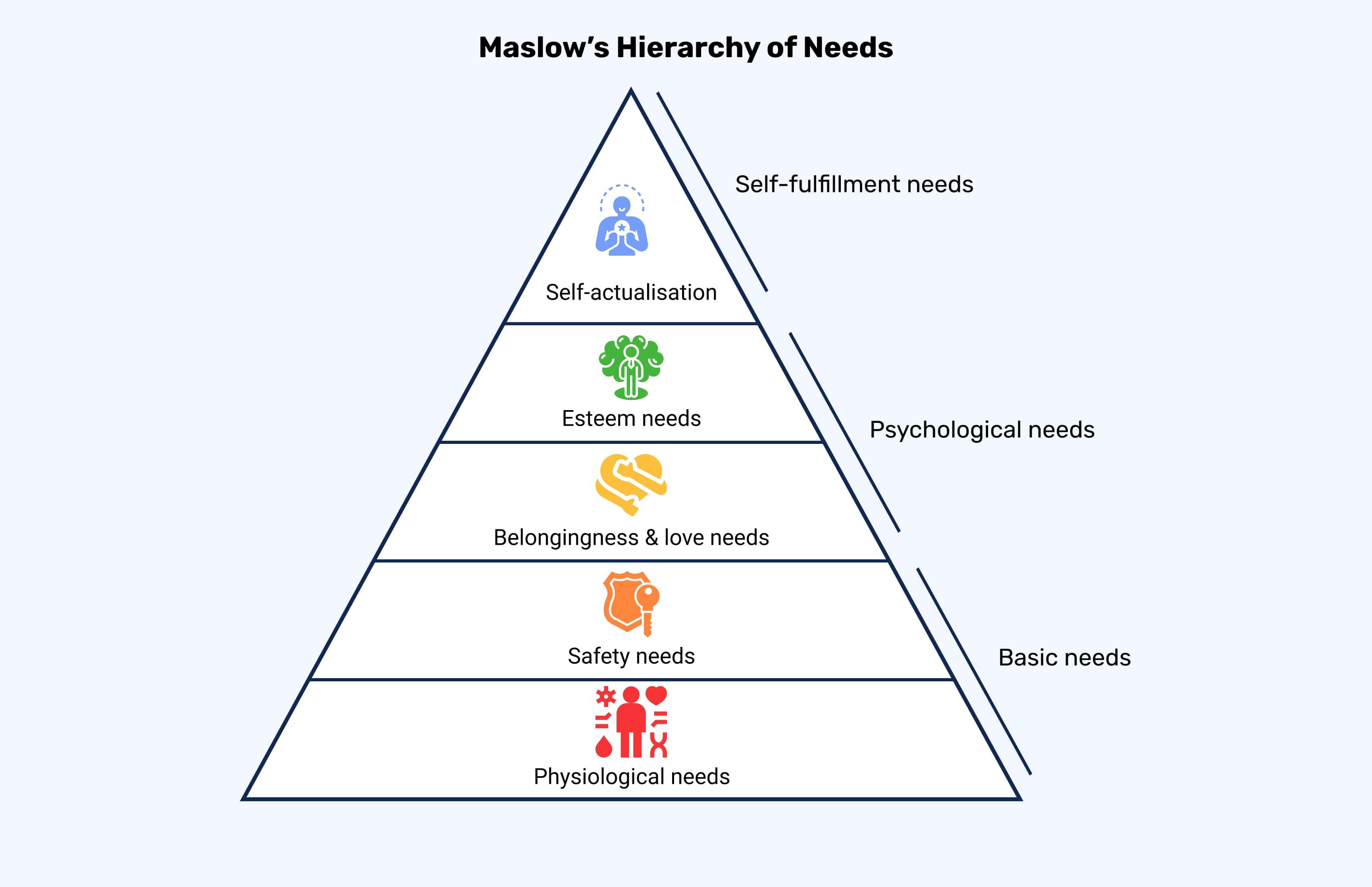
Maslow’s Hierarchy of Needs is a suitable model to examine before mapping game principles to motivational theory. Maslow suggested that individuals have a hierarchy of needs and that each need must be addressed and fulfilled sequentially if the individual is to become self-actualized/complete. These needs are listed in order below:
– Physiological needs: These include air, food, water, sleep, sex, rest, shelter, and sanitation. Unless these needs are satisfied, all other motivators are potentially undermined.
– Security needs: The step up relies on feeling happy about protecting the basic needs established above. These elements encompass both emotional and economic security.
– Belongingness needs: Most people prefer to get on with those around them; to feel part of a group; wanting to be accepted by their peer group. This may involve adapting to meet that group in terms of values, behavior, and even dress.
– Esteem needs: These needs include status and recognition, being valued for the contribution being made to the group. In business, status can be reflected by position in the company, salary, company car, and other perks, whereas in games it could be score, rank, etc.
– Self-actualisation needs: This is a need to feel that you are achieving something and that you are making a difference. There may be no external physical signs of fulfilling the need, as it is personal and within. It reflects being aware that you have done the best you can or perhaps exceeded your previous expectations.
Gamer Types
The effectiveness of gamification relies on leveraging the psychology of motivation to encourage players to play. When combined with a non-game process, this makes players motivated to perform tasks that beforehand they may not have been interested in.

- Children play, adults too - gamification makes this principle usable
Marczewski’s gamification user types theory expands on previous research into gamer types by Richard Bartle and lists six user types and their particular motivations to play games and gamified systems.
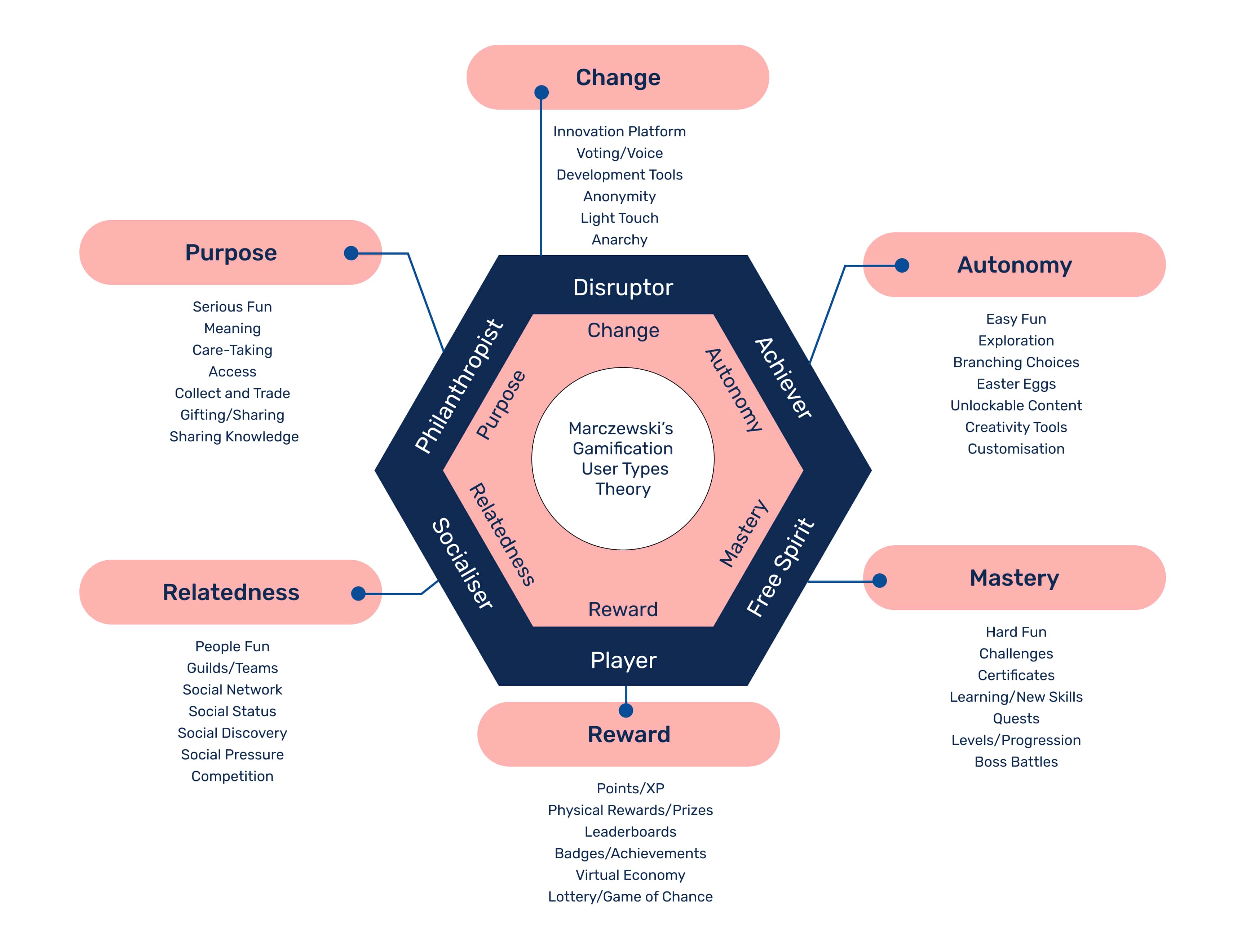
In brief, these types behave as follows:
Socializers: Socialisers want to interact with others and create social connections; they will actively seek out and encourage social interaction in any environment and are motivated by this.
– Free Spirits: Free Spirits want to create and explore — they will experiment and find ways to push the boundaries of any process but will become discouraged when they meet the ‘edge’ of a world.
– Achievers: Achievers are looking to learn new things and improve themselves. They are motivated by challenges to overcome and the rewards that overcoming those challenges can provide.
– Philanthropists: Philanthropists are altruistic, wanting to give to other people and enrich the lives of others in some way with no expectation of reward. They are often at the hub of other types.
– Players: Players will do what is needed of them to collect rewards from a system. They are in it for themselves and are more interested in learning and exploiting the rules of the game.
– Disruptors: Disruptors as the name suggests want to disrupt your system, either directly or through other users. While they can be destructive, they can force either positive or negative change.
See how big enterprise companies using gamification in their digital products
According to game theory, almost anything can be seen as a game. Below I present some useful examples of gamification that you can use for your products (not only in B2B). You will be surprised where you can playfully influence your target group!
Complete your data on LinkedIn, Facebook & Co.

- Gamification as a marketing tool to generate more data on LinkedIn
If you create a profile on a social media network of your choice, then you are guaranteed to have already come into contact with a gamification approach. The game is called: I will show you a scale from 0 to 100% and mark the point at which you have just arrived with the completion of your profile. Or in short: visualization as a game. We are geared towards reaching 100% and consequently we try to enter the missing data. The reward is a higher percentage that doubles as a motivator. LinkedIn in particular has perfected this principle in recent years. And with the Social Selling Index (SSI) they created not just an index value, but a magical gamification tool that shows the moves of a strategy game. On different axes, you have to (D) develop a character to win the game.
Collect points when shopping, losing weight, and traveling
Regardless of whether you collect miles with Lufthansa, Bahn, and Co. or Payback or ADAC points: the prospect of exchanging these points for real value at some point is very tempting for consumers. Accordingly, such bonus systems are on the rise. In fact, however, it is a gamification approach: whoever collects the most points gets a prize. Just like at the lottery booth. You can also make use of this principle, for example in combination with your own community. However, you should not underestimate the effort involved in setting up and running such a rewards program. And many users have long since understood the principle of data collection and are turning away from this concept.
Bayer: Get to know compliance in a playful way
Compliance is an issue that concerns many companies. Unfortunately, it is also a difficult topic to convey and is often communicated to employees in the form of lecture series, workshops, or brochures. With a serious game concept, Bayer took a completely different approach to attracting the attention of all employees to the new compliance guidelines. On several levels, with interactive videos and in different languages, employees are not only brought closer to the topic of compliance in a playful way but correct behavior is also learned at the same time. A complex, but at the same time clear example of how gamification can be used sensibly and profitably.
Oracle: build your own cloud
Experience playfully how modular and easy to configure your own product is - this is the approach behind the Cloud Stacker game that Oracle presented a few years ago. The game went viral on the web but was also used at trade fairs and events. And with great success: According to gamewheel.com, the provider of the game, the game achieved a CTR of 85%. A remarkable value, but I would be more interested in the quality of the generated leads. Due to the virality and the target group approach as well as the communication of the essential product features, it is nevertheless an extremely positive example.
Use gamification in B2B products
You are probably now wondering how you can use gamification yourself. Of course, you can use the examples as a guide and develop your own solutions based on them. But before you get started, you should take a look at the following fields of action for gamification. I have compiled four fields for you that provide an excellent basis for gamification approaches:
- Stimulate competition
People like to compete for the best result, the fastest time, and the most beautiful design,... - Solve riddles
Escape rooms, adventures, or who wants to be a millionaire: Solving puzzles is also an option for gamification - Give feedback
Star ratings, sliders & Co. ensure playful interaction with users - Polish ego
Expert status, activity champions, and other titles motivate users (think LinkedIn and the Social Selling Index).
There are also three principles that are applicable to all gamification scenarios. Accordingly, users must:
- Be motivated to do something (e.g. by reward).
- Be able to carry out an action (e.g. by providing assistance).
- Be triggered to initiate or complete an action (e.g. by action instructions).
If that sounds familiar to you from everyday advertising and marketing, then there are two of us here. Ultimately, modern content marketing works in a similar way along the customer journey. That's why I'm always amazed at how rarely I come across gamification approaches in B2B marketing or in marketing in general.
Maybe it's because of the shrinking marketing budgets of the last few years. Or a lack of specialist knowledge about the possibilities of gamification. It is possible that gamification has simply not yet arrived in B2B marketing and is another blank spot on the marketing map.
Takeaway
- Gamification is closely intertwined with digitization and social change.
- Getting data through play is one of the main goals of gamification.
- Combined with knowledge of game theory, new models for marketing are constantly emerging.
- Best practice examples show how gamification can be used sensibly.
- So far, there have only been a few good examples of playful approaches in B2B products.
- The underlying techniques and mechanisms are easy to learn and use.




